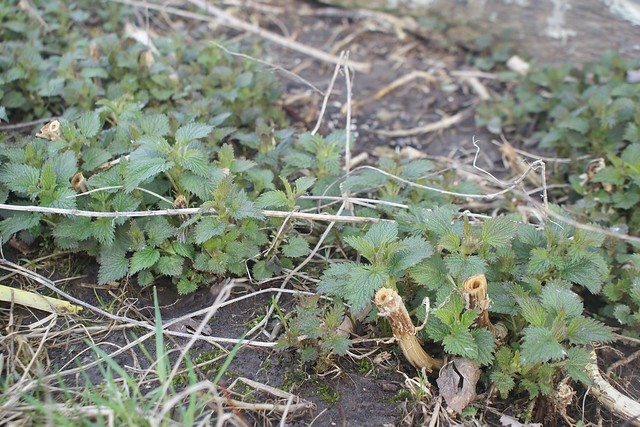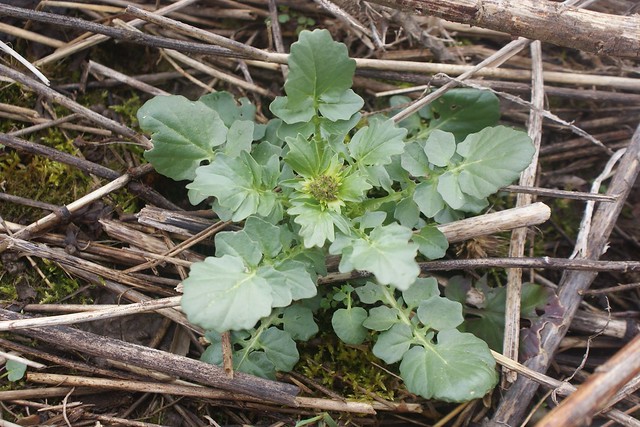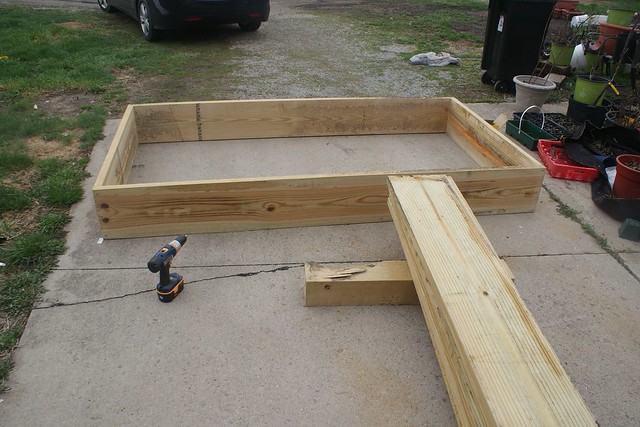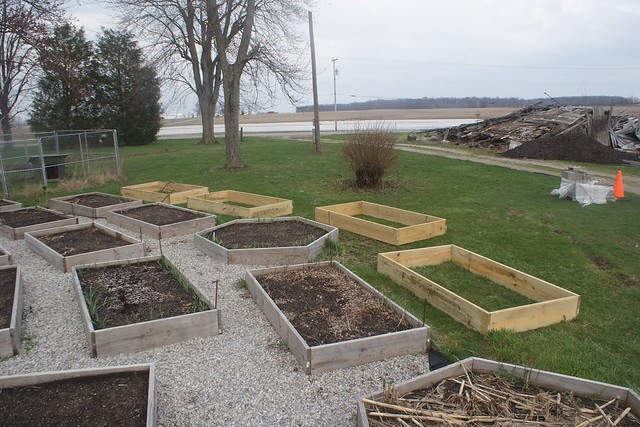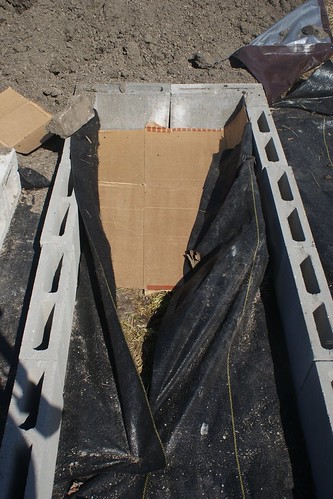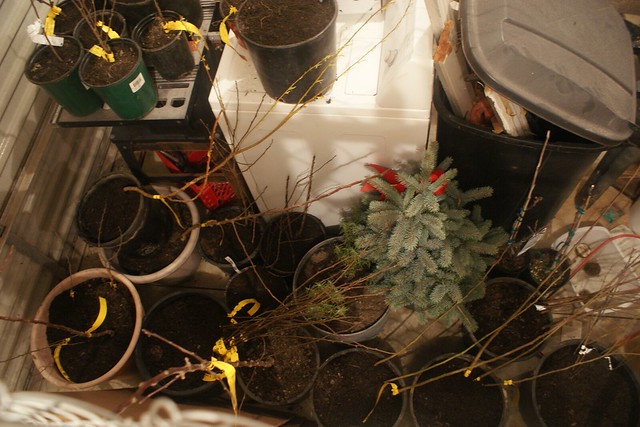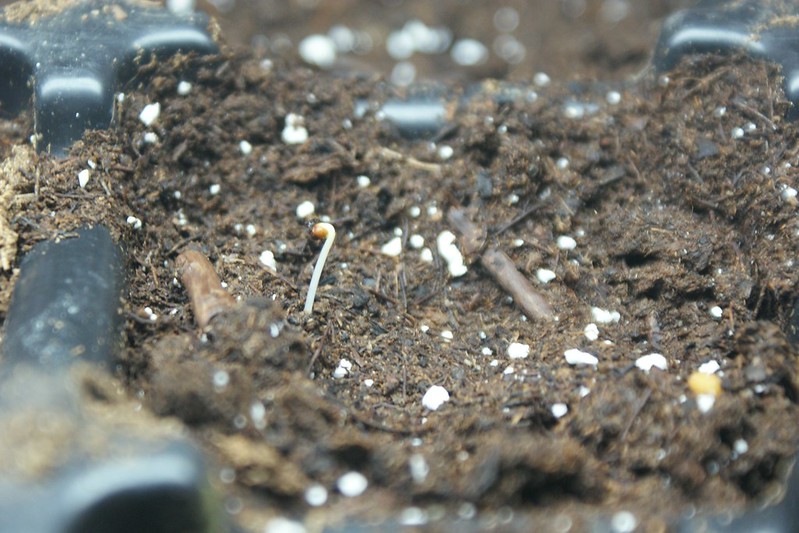Did some general cleanup around the farm first thing this morning, while I waited for our neighbor up the road to swing by with her parents and take some barn wood for a chicken coop she's building. I cleaned the old canes out of the stinging nettle patches. They're just starting to poke out their first growth. Can't wait to start harvesting for cooking/tea. I'm sure not too many people enjoy cultivating them as much as we do. We cherish them as a no-fuss, no-maintenance, delicious and nutrient-dense addition to our spring diet.
And now that spring is arriving, some of our earliest fruit trees are starting to bloom. Our Galaxy Peach tree by the driveway is about half-bloomed, and I even spied some honeybees attending to the flowers today. Not much besides our maple trees are blooming out here yet, I imagine they are taking what they can get... soon enough there will be an endless bounty for them.
Our neighbor and her folks showed up around 10am, and spent the better part of three hours selectively pulling wood off the barn wreckage. They moved more than they took, and you can hardly tell there's any missing.
I spent the better part of the day out in the field, planting chestnut and black locust seedlings. This is the perfect time of year for such a task, before the field becomes an impenetrable riot of switchgrass and field weeds, and the clouds of mosquitoes swell to semi-biblical proportions even during the hottest part of the day. Today there was only the crunch of last year's brittle growth under foot.
Having received approximately no human attention for the better part of fifteen or twenty years, the soil in the field has benefited from the constant cycle of growth and decay playing out along it's surface. It is still somewhat clay-heavy in spots, but driving a spade into the ground most anywhere produces earth that is dark and crumbly and absolutely loaded with worms and their casings. Still, I'm hedging my bets by planting the chestnuts in the best-draining areas only.
About half of the chestnuts I bought are only 1-2 year old seedlings, and are looking a bit wimpy to plant out in the field at their small size. I may pot them up near the house and grow them a bit before transplanting them.
Total tally for the day was a total of seventeen trees planted... six Silverleaf Chestnuts and eleven Black Locust seedlings. I took special care with the chestnuts, clearing a large three-foot-square area and covering it with landscaping fabric and mulch. Every tree got a Tubex tree tube, to speed growth and because the rabbits and deer are always hungry.
Spent the last portion of the day removing the failed grape trellis that runs behind the house. The grapes (which are always described as being carefree and easy to grow) languished since day one... I think they were in soil that was too heavy, with not enough water and too many insects (Japanese Beetles especially) that enjoyed munching on them. A few of the larger specimens might end up in the plant hospital depending on how they bud out, but most aren't even worth saving.
We're thinking that when we try a mass-planting of grapes again, we're going to plan it out better first this time... finding the right grapes and putting them in the right location. Novel idea, huh? Ah well, this is how we learn...

